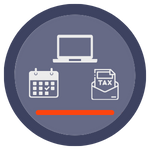Compare savings accounts
Get the best returns on your savings by comparing all available options

The breakdown
- Savings accounts range from high-interest options that require notice for withdrawals, to more flexible options with weaker rates.
- You could save on tax with a PIE savings account which has a maximum tax rate of 28%.
- The best savings account for you largely depends on how quickly or regularly you might need to access your funds.
Author: Kevin McHugh, Head of Publishing at Banked.
What is a savings account?
A savings account lets you earn interest on the money you keep in the account. To use a simple example, if you had $5,000 in a savings account that had an interest rate of 4%, at the end of a full year you would earn $200 in interest, giving you a total amount of $5,200.
However, many savings accounts have requirements that you must meet in order to earn the maximum interest on offer. Some insist that you make monthly deposits into the account, while others restrict your ability to withdraw money — either by requiring a notice period or by limiting the number of withdrawals you can make each month.
If you are not able to meet these requirements, you may not earn the maximum interest rate or you may face a fee (depending on the savings account).
Learn more about the different types of savings accounts (and their requirements) in the section further down.
If you want to earn more interest on your money, but deal with less flexibility, consider a term deposit – compare term deposit rates.
Compare savings accounts
Use our comprehensive table below to compare savings accounts (ordered by maximum potential interest rate) and the requirements they include.
The accounts are organised interest rate, highest to lowest. But note that savings accounts with higher interest rates also usually come with more demanding requirements, such as a requirement that a 90-day notice period be given for withdrawals.
All rates reviewed: 18 October 2025.
| Bank | Potential interest rate (p.a.) | Requirements |
|---|---|---|
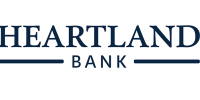 Heartland Bank 90 Day Notice Saver
Heartland Bank 90 Day Notice Saver
|
3.20% | 90-day withdrawal notice period. |
 Westpac Notice Saver
Westpac Notice Saver
|
3.00% | 32-day withdrawal notice period |
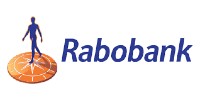 Rabobank NoticeSaver
Rabobank NoticeSaver
|
2.75% | 60-day withdrawal notice period. |
 Rabobank PremiumSaver
Rabobank PremiumSaver
|
2.45% | Must increase the balance by at least $50 each month. |
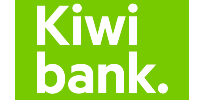 Kiwibank Notice Saver (90 Day)
Kiwibank Notice Saver (90 Day)
|
2.35% | 90-day withdrawal notice period. |
 Heartland Bank Digital Saver
Heartland Bank Digital Saver
|
2.35% | One free self-service withdrawal each month. Additional self-self service withdrawals incur a $4 fee. |
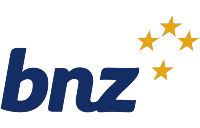 BNZ Rapid Save
BNZ Rapid Save
|
2.30% | One free withdrawal each month. Additional withdrawals incur a $3 fee. |
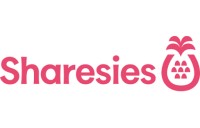 Sharesies Save account
Sharesies Save account
|
2.30% | N/A |
 Cooperative Bank Step Saver
Cooperative Bank Step Saver
|
2.20% | Must make a deposit each month and make no more than one withdrawals. If not, only the standard interest rate of 1.80% is earned. |
 Kernel Smart Saver
Kernel Smart Saver
|
2.05% | N/A |
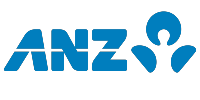 ANZ Serious Saver
ANZ Serious Saver
|
2.05% | Must deposit at least $20 per month and make no withdrawals. If not, only the standard interest rate of 1.20% is earned. |
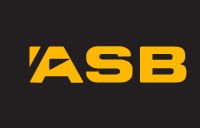 ASB Savings Plus
ASB Savings Plus
|
1.95% | Can only make one withdrawal per calendar quarter or only the base interest rate is earned. |
 Kiwibank Notice Saver (32 Day)
Kiwibank Notice Saver (32 Day)
|
1.80% | 32-day withdrawal notice period. |
 Heartland Bank Direct Call
Heartland Bank Direct Call
|
1.80% | N/A |
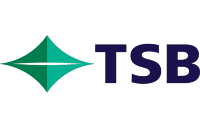 TSB Web Saver
TSB Web Saver
|
1.70% | PIE option available. |
 Kiwibank Online Call
Kiwibank Online Call
|
1.50% | Must be opened with a TSB everyday account and a minimum deposit of $350 applies. |
 Westpac Bonus Saver
Westpac Bonus Saver
|
1.50% | Must deposit at least $20 per month. If not, only the standard interest rate of 1.00% is earned. PIE option available. |
 Rabobank RaboSaver
Rabobank RaboSaver
|
1.45% | N/A |
 Cooperative Bank Prize Draw Saver
Cooperative Bank Prize Draw Saver
|
0.35% | For every $100 of your average daily account balance, you get an entry into a monthly draw to win a Mini Cooper. |
 ASB Savings On Call Account
ASB Savings On Call Account
|
0.10% | N/A |
 ANZ Online Account
ANZ Online Account
|
0.05% | N/A |
 Westpac Simple Saver
Westpac Simple Saver
|
0.05% | N/A |
Which is the best savings account?
The best savings account for you mainly depends on how long you can leave your money in the account without withdrawing it. Below we look at some of the best options available right now.
The accounts with the highest interest rates
Right now, Heartland Bank’s 90-Day Notice Saver has the highest interest rate of any NZ savings account at 3.20%. However, as the name suggests, you can only withdraw money from the account if you give 90 days notice.
The bank may allow withdrawals with a shorter notice period under special circumstances (such as unforeseen financial hardship) but if it does allow this an early withdrawal fee of $12 (minimum) will apply.
The different types of savings accounts explained
There are a range of different savings accounts out there and they can be broken down into a number of different types — each with their own requirements.
We explain how each of those types works here and help you understand if it’s the right type for you.
Notice savings accounts
Notice savings accounts usually offer the highest return of all savings accounts. But with that reward comes a significant restriction: you must provide notice if you want to withdraw your money. That notice period will either be 90 days or 32 days, depending on the account.
In some unique circumstances (if you can demonstrate that you are experiencing financial hardship, for example) you can withdraw your money earlier than this, but it is not easy and you will still have to pay a fee.
Who is it right for? Notice savings accounts are for those who want to get the maximum possible interest from their savings accounts and are certain that they will not need to unexpectedly access those funds.
Call savings accounts
Call savings accounts are much more flexible than notice savings accounts. You don’t have to provide a notice period which means that it’s much easier to access it if needed.
However, with that flexibility comes a lower interest rate — the best call accounts still have interest rates that are around 1% or more lower than the strongest notice savings accounts.
Some banks have two types of call account: regular and online/digital. These are the same in most respects but have a couple of key differences.
Digital or online call accounts sometimes have a slightly higher interest rate, but may have the caveat that any withdrawals must be done online (by transferring to another account using the bank’s app, for example) and a fee is incurred if you want to do so in-branch. Regular call accounts don’t have that limitation, but counter that benefit with a lower interest rate.
Who is it right for? Call savings accounts are usually best for people who may need quicker or possibly even regular access to their savings that would not be possible with a notice account.
PIE savings accounts
These are savings accounts that are also portfolio investment entities (PIEs).
While the name is complicated, the benefit of a PIE savings account is fairly simple: you could pay less in tax.
Any returns you earn from a PIE account are charged at a maximum interest rate of 28%. This means that if your personal tax rate is 30%, 33%, or 39% (see more on the tax rate bands in New Zealand), you would have to pay less tax than usual on the returns you get from a PIE savings account.
Some banks offer alternative PIE versions of existing savings accounts which have all the same benefits and the same interest rate of their non-PIE alternative.
Who is it right for? Consider a PIE savings account if you earn enough that your personal tax rate is higher than the 28% maximum of a PIE account.



